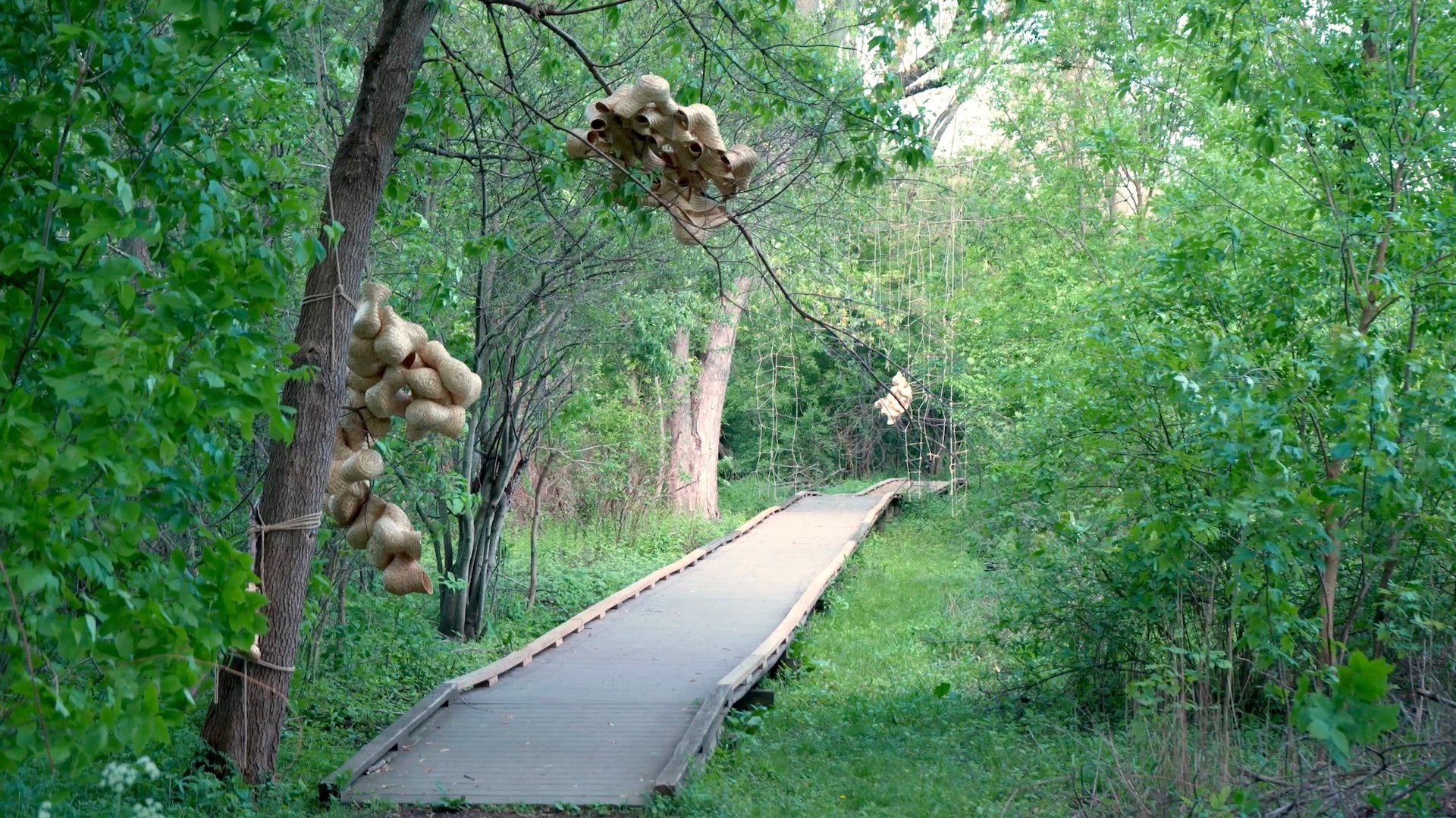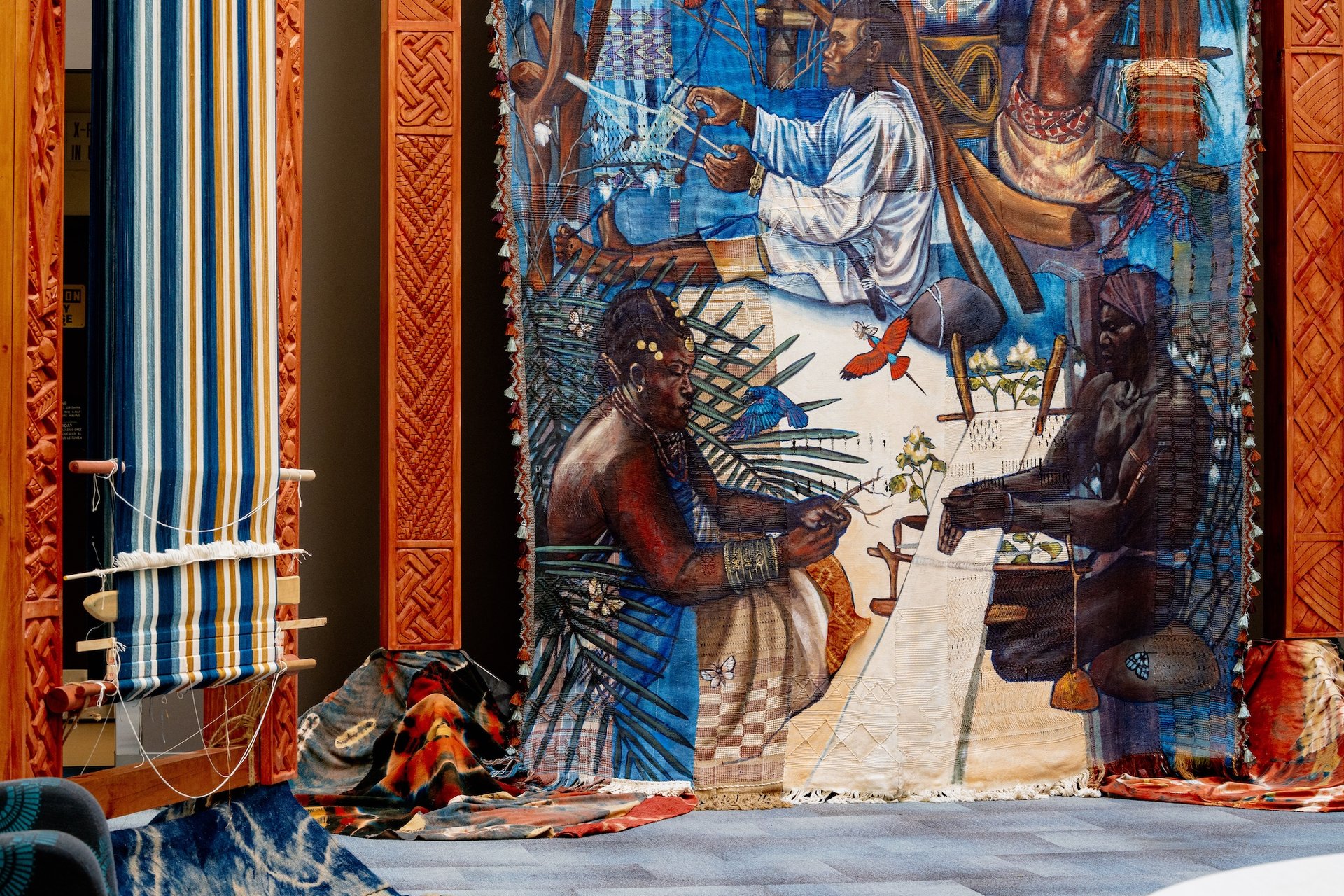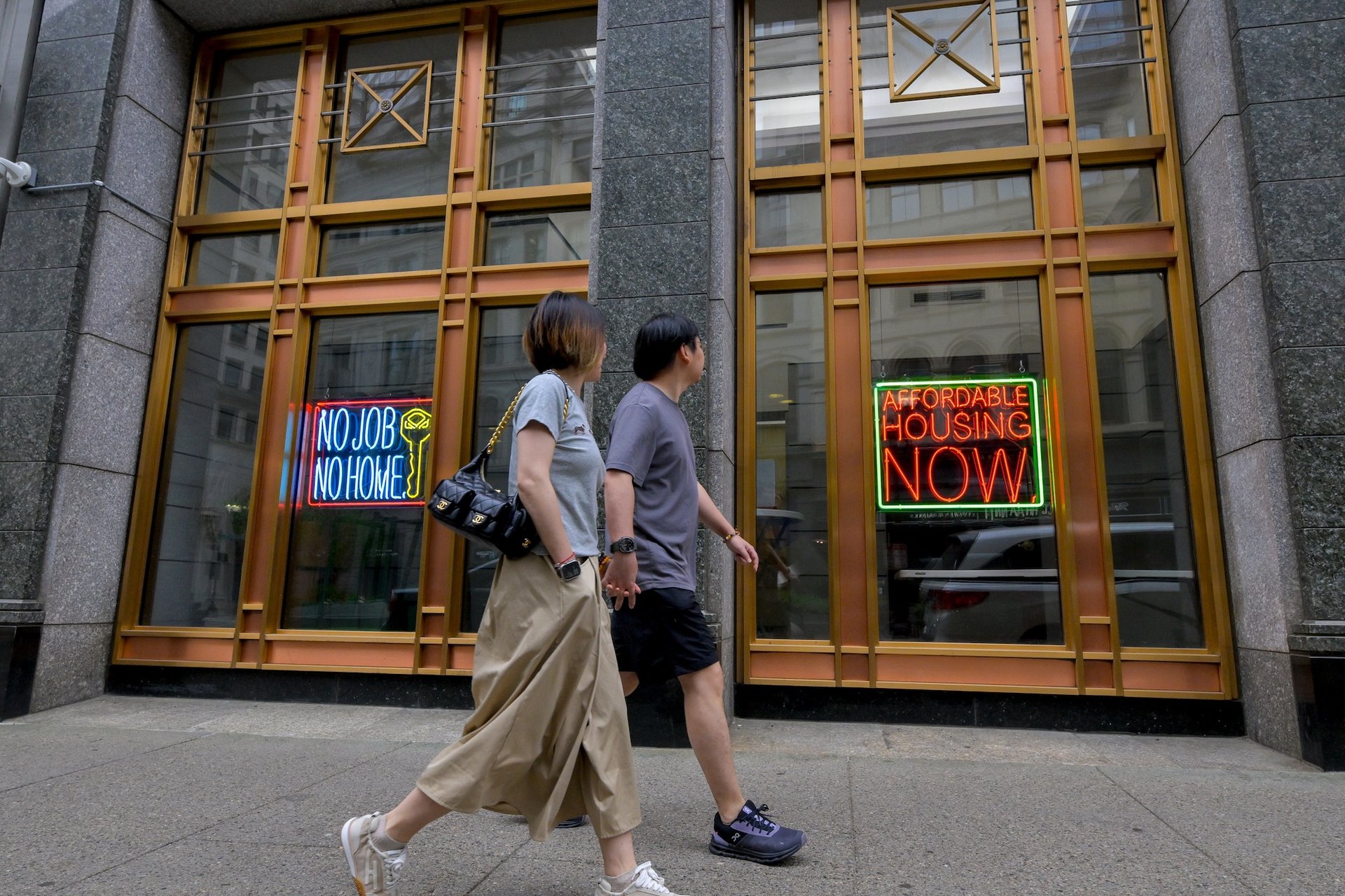Boston Public Art Triennial launches with more than a dozen projects across the city
A whole lot of world-class art is coming to public spaces and cultural institutions across the city of Boston starting on 22 May. The inaugural Boston Public Art Triennial, with a projected cost of $8m, will bring site-specific installations and performance-based and community-led activities—all entirely free—to neighbourhoods across the city through the end of October. Newly commissioned works and programming by more than a dozen artists will probe themes like Indigenous experience, trauma and healing, social justice, healthy communities and our relationship to nature.
In Reclaiming Our Hands, the Boston-based educator and textile artist Stephen Hamilton will explore African fibre crafts at the Royall House and Slave Quarters in Medford, which has the last preserved separate slave quarters in the northern US. Meanwhile Caledonia Curry, better known as Swoon, will address trauma and healing with a fairy-tale house at the Boston Public Library. And the Tlingit and Unangax̂ artist Nicholas Galanin’s I think it goes like this (pick yourself up) will reinterpret the forms of a traditional totem pole in bronze.
Installation view, Nicholas Galanin, I think it goes like this (pick yourself up), Boston Public Art Triennial, 22 May-31 October Photo: Faith Ninivaggi. Courtesy Boston Public Art Triennial. Triennial 2025: The Exchange
Maybe most importantly, the artists in the triennial invite viewers to imagine new ways of understanding the world.
“It’s important for us to imagine the world without us destroying it,” says Beatriz Cortez, a San Salvador-born, Los Angeles-based sculptor and scholar. “And in order to do that, we need to have the ability to imagine other temporalities and possibilities—without having to extract so many things for profit, capitalism and colonial reasons.”
Cortez’s Nomad 2, sited at the Charlestown Navy Yard, is a 12-ft-tall welded-steel whale vertebra with an interactive chamber. She conceived the idea while on a trip to the Arctic archipelago of Svalbard in 2023, searching for an ancient particle but instead confronted by piles of whale bones. “It felt a lot like witnessing a massacre,” Cortez says. “I didn’t understand the extent to which whales were decimated to extract fuel from their bodies.” Her project will be fitted with audiovisuals, including footage that Cortez took in the Arctic of whales breathing, ice melting and machinery lubricated by oil.

Installation view, Laura Lima, Indistinct Dorm (Forma Indistinta), Boston Public Art Triennial, 22 May-31 October Photo: Luc Alonzo. Courtesy Boston Public Art Triennial. Triennial 2025: The Exchange
Bringing shade and beauty to Dr Loesch Family Park
The artist and researcher Ekene Ijeoma launched his project Black Forest last year as a living monument to Black lives upended by Covid-19 and racial injustice. He was inspired by a tree that had been chopped down and left in the street. It struck him as violent and negligent, reminiscent of the callous murder of the teenager Michael Brown in Ferguson, Missouri, in 2014. “I just made all the connections. I can’t breathe. Air. Covid-19. Respiratory. Trees, which create oxygen,” Ijeoma says. “It’s all full circle.
For the triennial, Ijeoma will return to Dorchester’s Dr Loesch Family Park, already a Black Forest host site, to plant a red maple (a shade tree that can live for more than 100 years), encircled by a bench. Forty stones have been hand-selected and digitally fabricated into continuous seating, and their supports will be made from mirror-polished steel.
“It started as a living monument and archive for Black lives lost to Covid-19,” Ijeoma says. “Now it’s a living monument and archive for Black lives. And we’re not just mourning Black lives; we are celebrating them.”
‘Not edges but engines’

Installation view, Stephen Hamilton, Under the Spider’s Web, Boston Public Art Triennial, 22 May-31 October Photo: Cameron Kincheloe. Courtesy Boston Public Art Triennial. Triennial 2025: The Exchange
The Berlin-based French Swiss artist Julian Charrière finds inspiration in volcanoes, ice fields and undersea locations but, he says, remoteness is a question of perspective: “What feels distant to us is often central to the Earth’s metabolism. Glaciers, volcanoes, deep-sea vents—these are not edges but engines,” providing an opportunity to explore humans’ disconnect from the natural world.
Charrière’s installation in Boston, Calls for Action, is a 24-hour live feed to a newly protected tract of rainforest in Brazil. A high-resolution camera, an infrared night camera and two microphones will empower visitors to not only observe the habitat but also call into it via their smartphones using a specially calibrated speaker embedded in the rainforest.
“This unfamiliarity is intentional and vital,” Charrière says. “It highlights the unease and ambiguity of presence, the notion that our voices do not belong there, that we are intruding. Yet this intrusion is productive. It forces awareness. It demands a pause. We are so often disconnected from the ecosystems that sustain us, and so many of our interactions with nature are extractive or instrumental.”
Climate resilience, community resilience

Installation view, Patrick Martinez, Cost of Living, Boston Public Art Triennial, 22 May-31 October Photo: Faith Ninivaggi. Courtesy Boston Public Art Triennial. Triennial 2025: The Exchange
The multidisciplinary artist Evelyn Rydz was chosen along with Alison Croney Moses and Andy Li for the 14-week “accelerator” programme designed to support rising Boston talent. Like Cortez’s whale vertebra, Rydz’s project Convergence: Porous Futures will be sited at the Charlestown Navy Yard—berth of the 18th-century naval ship the USS Constitution and the confluence of two major rivers into Boston Harbor.
“I wanted to extend our thinking of preservation to the natural world, to what we preserve, what we protect, what we sustain, and really highlight the importance of protecting our shared water bodies,” Rydz says.
Her installation is grounded by a rain garden encircling an elevated, mirror-panelled sculpture arranged in the negative space of a storm drain. She calls it the place where water seemingly goes to disappear. The site also includes bioswales mimicking the lines of the Charles and Mystic Rivers and filled with rocks and native companion plants, which benefit each other and the ecosystem.
“When we think about resilience—climate resilience, community resilience—mutual support is so important,” Rydz says.
- Boston Public Art Triennial, multiple locations, until 31 October




